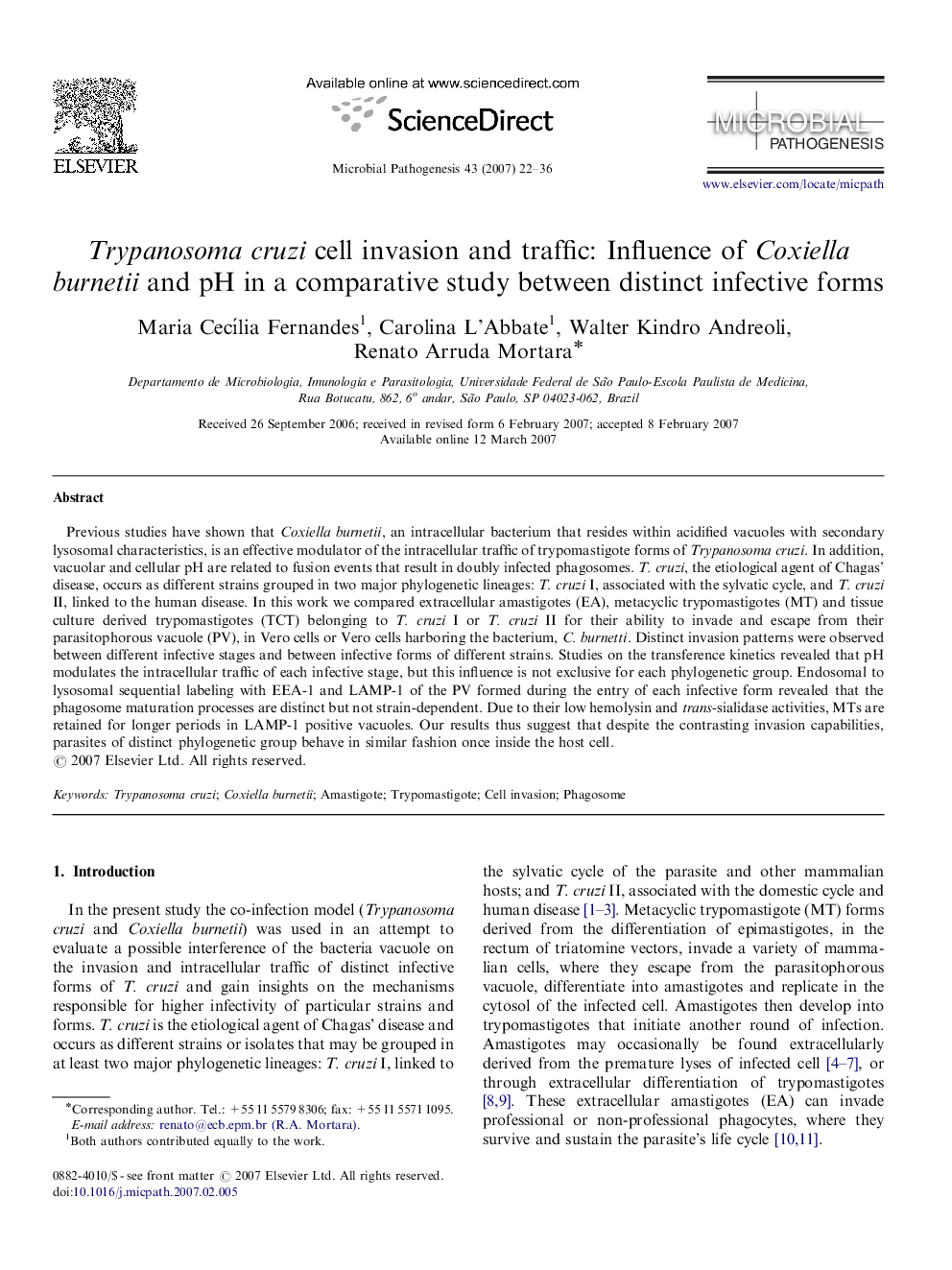| Article ID | Journal | Published Year | Pages | File Type |
|---|---|---|---|---|
| 3417319 | Microbial Pathogenesis | 2007 | 15 Pages |
Previous studies have shown that Coxiella burnetii, an intracellular bacterium that resides within acidified vacuoles with secondary lysosomal characteristics, is an effective modulator of the intracellular traffic of trypomastigote forms of Trypanosoma cruzi. In addition, vacuolar and cellular pH are related to fusion events that result in doubly infected phagosomes. T. cruzi, the etiological agent of Chagas’ disease, occurs as different strains grouped in two major phylogenetic lineages: T. cruzi I, associated with the sylvatic cycle, and T. cruzi II, linked to the human disease. In this work we compared extracellular amastigotes (EA), metacyclic trypomastigotes (MT) and tissue culture derived trypomastigotes (TCT) belonging to T. cruzi I or T. cruzi II for their ability to invade and escape from their parasitophorous vacuole (PV), in Vero cells or Vero cells harboring the bacterium, C. burnetti. Distinct invasion patterns were observed between different infective stages and between infective forms of different strains. Studies on the transference kinetics revealed that pH modulates the intracellular traffic of each infective stage, but this influence is not exclusive for each phylogenetic group. Endosomal to lysosomal sequential labeling with EEA-1 and LAMP-1 of the PV formed during the entry of each infective form revealed that the phagosome maturation processes are distinct but not strain-dependent. Due to their low hemolysin and trans-sialidase activities, MTs are retained for longer periods in LAMP-1 positive vacuoles. Our results thus suggest that despite the contrasting invasion capabilities, parasites of distinct phylogenetic group behave in similar fashion once inside the host cell.
